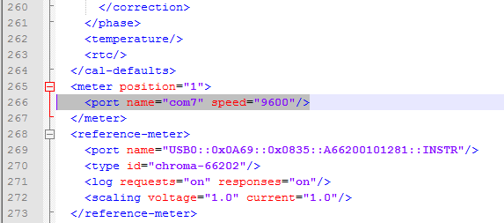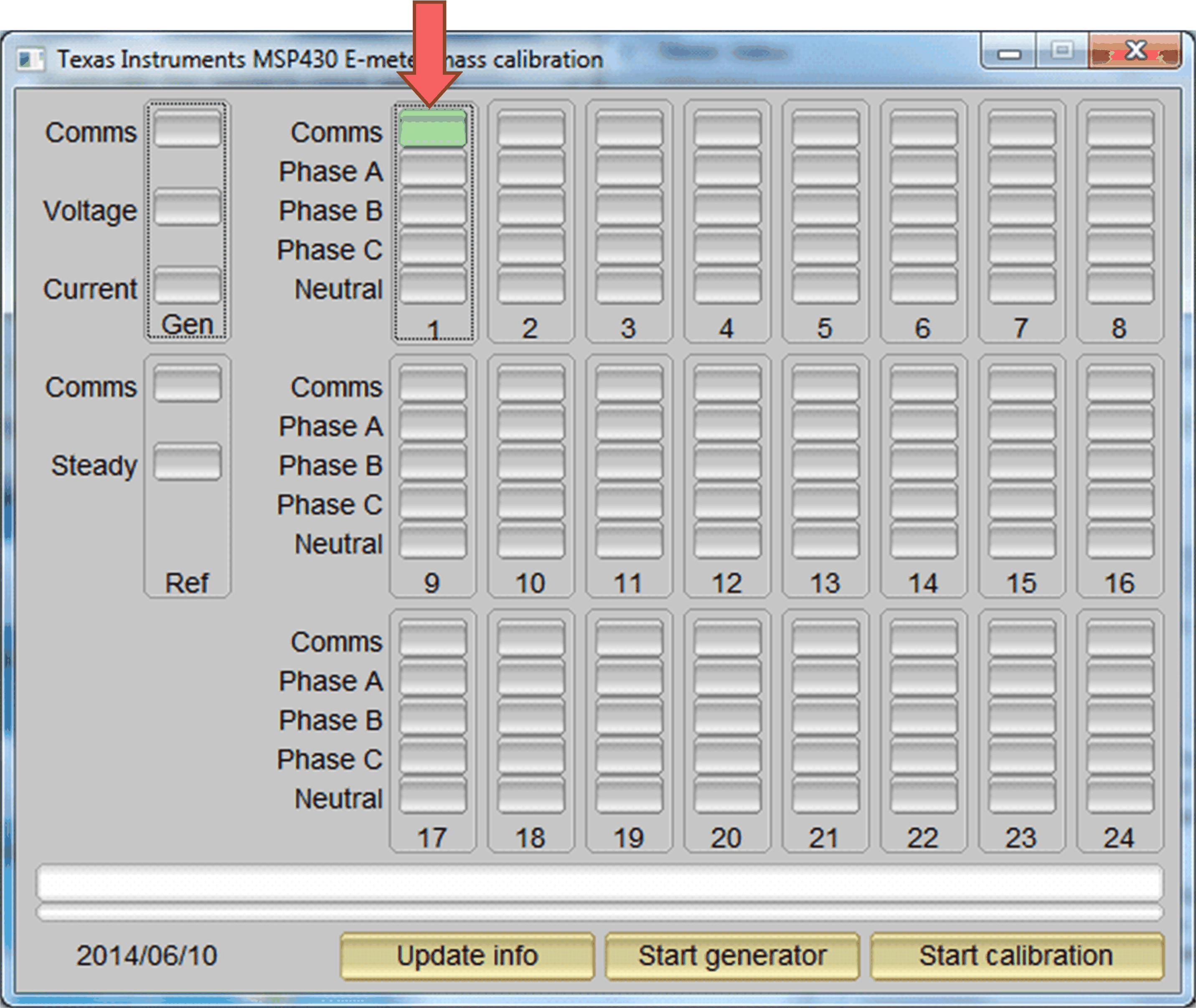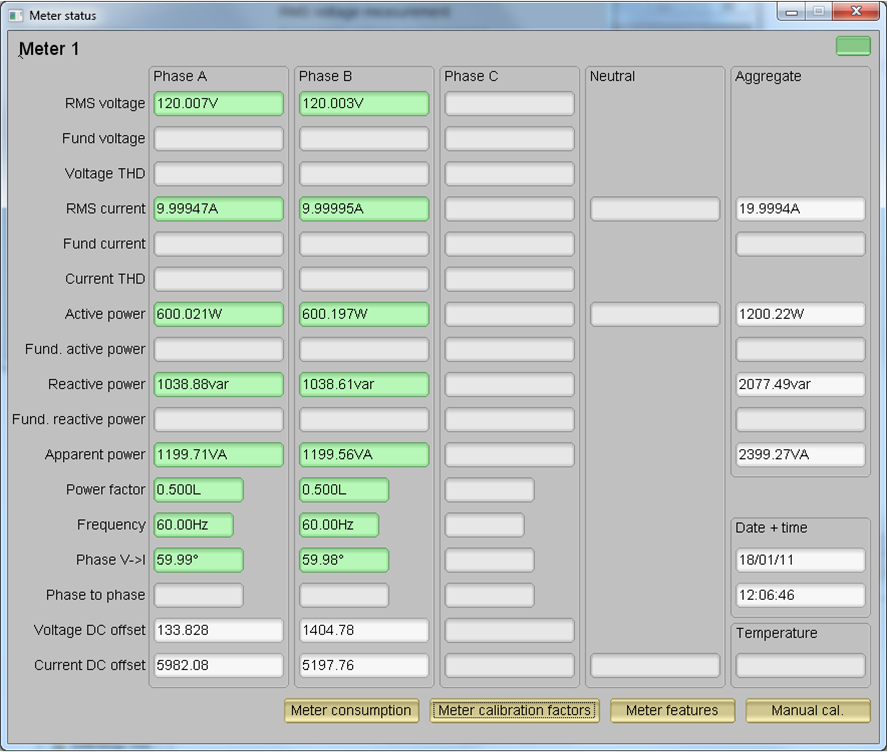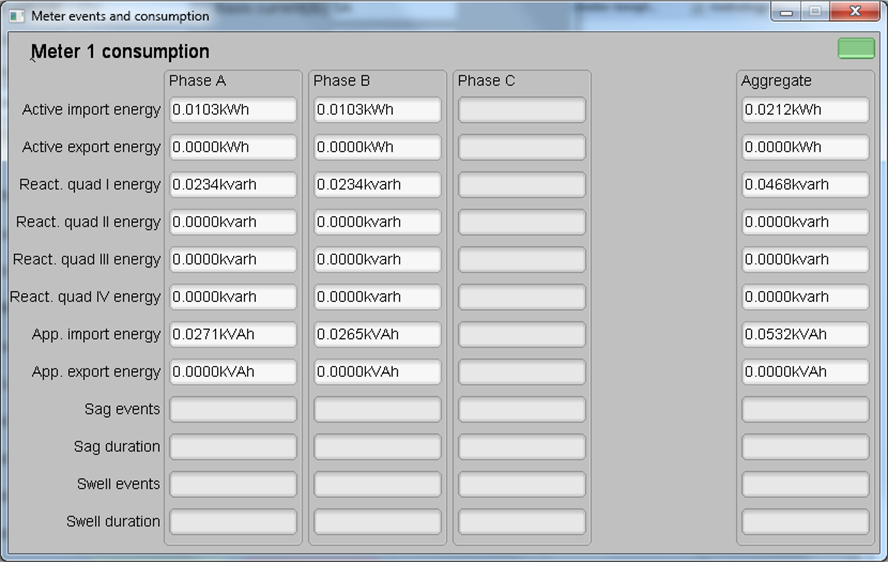TIDUF25 june 2023 ADS131M08 , MSPM0G1507
- 1
- Description
- Resources
- Features
- Applications
- 6
- 1System Description
- 2System Overview
-
3System Design Theory
- 3.1 How to Implement Software for Metrology Testing
- 3.2 Clocking System
- 3.3 UART Setup for GUI Communication
- 3.4 Real-Time Clock (RTC)
- 3.5 LCD Controller in MSP430FR4131
- 3.6 Direct Memory Access (DMA)
- 3.7 ADC Setup
- 3.8 Foreground Process
- 3.9 Background Process
- 3.10 Software Function per_sample_dsp()
- 3.11 LED Pulse Generation
- 3.12 Phase Compensation
-
4Hardware, Software, Testing Requirements, and Test Results
- 4.1 Required Hardware and Software
- 4.2
Test Setup
- 4.2.1 Connecting the TIDA-010243 to the Metering Test Equipment
- 4.2.2 Power Supply Options and Jumper Settings
- 4.2.3 Electricity Meter Metrology Accuracy Testing
- 4.2.4 Viewing Metrology Readings and Calibration
- 4.2.5 Calibration and FLASH Settings for MSPM0+ MCU
- 4.2.6 Gain Calibration
- 4.2.7 Voltage and Current Gain Calibration
- 4.2.8 Active Power Gain Calibration
- 4.2.9 Offset Calibration
- 4.2.10 Phase Calibration
- 4.2.11 Software Code Example
- 4.3 Test Results
- 5Design and Documentation Support
- 6About the Author
4.2.4.2 Calibrating and Viewing Results From PC
To view the metrology parameter values from the GUI, perform the following steps:
- Select whether to use the RS-485 or RS-232 connection for communication to the PC GUI. This selection is done by moving right or to the PCB edge for the RS-485 communication option, and moving the S2 switch left for the RS-232 communication option.
- Connect the reference design to a PC:
- RS-232 option: Connect the reference design to a PC using an RS-232 cable. If the PC does not have an RS-232 adapter, use a serial RS-232 adapter. The RS-232 adapter creates a COM port on the PC when the adapter is plugged in.
- RS-485 option: A USB to RS-485 adapter can be used to communicate between the PC GUI and the RS-485 port on this design. The USB to RS-485 adapter creates a COM port on the PC when the adapter is plugged in. The other end of the adapter has wires for the RS-485 Data A and Data B connections as well as a GND connection and a 5-V power connection, which are all connected to the J12 screw terminal block of the design according to the connection labels next to the terminal block pins. For testing this circuit, the following USB to RS-485 adapter is specifically used: http://www.ftdichip.com/Support/Documents/DataSheets/Cables/DS_USB_RS485_CABLES.pdf. For this specific adapter, the Data A connection is orange, the Data B connection wire is yellow, the GND connection is black, and the 5-V power connection is red.
- Open the GUI folder and open calibration-config.xml in a text editor.
- Change the port name field
within the meter tag to the COM port connected to the system. As Figure 4-4 shows, this
field is changed to COM7.
 Figure 4-4 GUI Configuration File Changed to Communicate With Energy Measurement
System
Figure 4-4 GUI Configuration File Changed to Communicate With Energy Measurement
System - Run the calibrator.exe file,
which is located in the GUI folder. If the COM port in the
calibration-config.xml was changed in the previous step to the COM
port connected to the reference design, the GUI opens (see Figure 4-5). If the GUI
connects to the design properly, the top-left button is green. If there are
problems with connections or if the code is not configured correctly, the button
is red. Click the green button to view the results.
 Figure 4-5 GUI Start-Up Window
Figure 4-5 GUI Start-Up Window
Upon clicking on the green button, the results window opens (see Figure 4-6). In the figure, there is a trailing "L" or "C" on the Power factor values to indicate an inductive or capacitive load, respectively.
 Figure 4-6 GUI
Results Window
Figure 4-6 GUI
Results WindowFrom the results window, view the total-energy consumption readings by clicking the Meter Consumption button. After the user clicks this button, the Meter events and consumption window pops up, as Figure 4-7 shows.
 Figure 4-7 Meter
Events and Consumption Window
Figure 4-7 Meter
Events and Consumption WindowFrom the results window, the user can also view the meter settings by clicking the Meter features button, view the system calibration factors by clicking the Meter calibration factors button, or open the window used for calibrating the system by clicking the Manual cal. button.